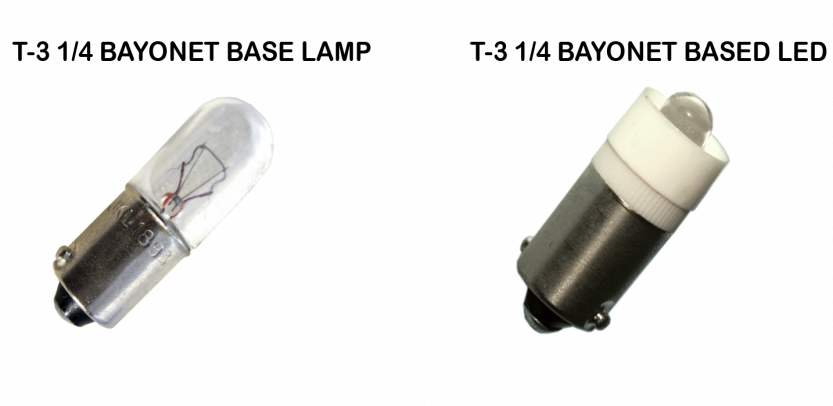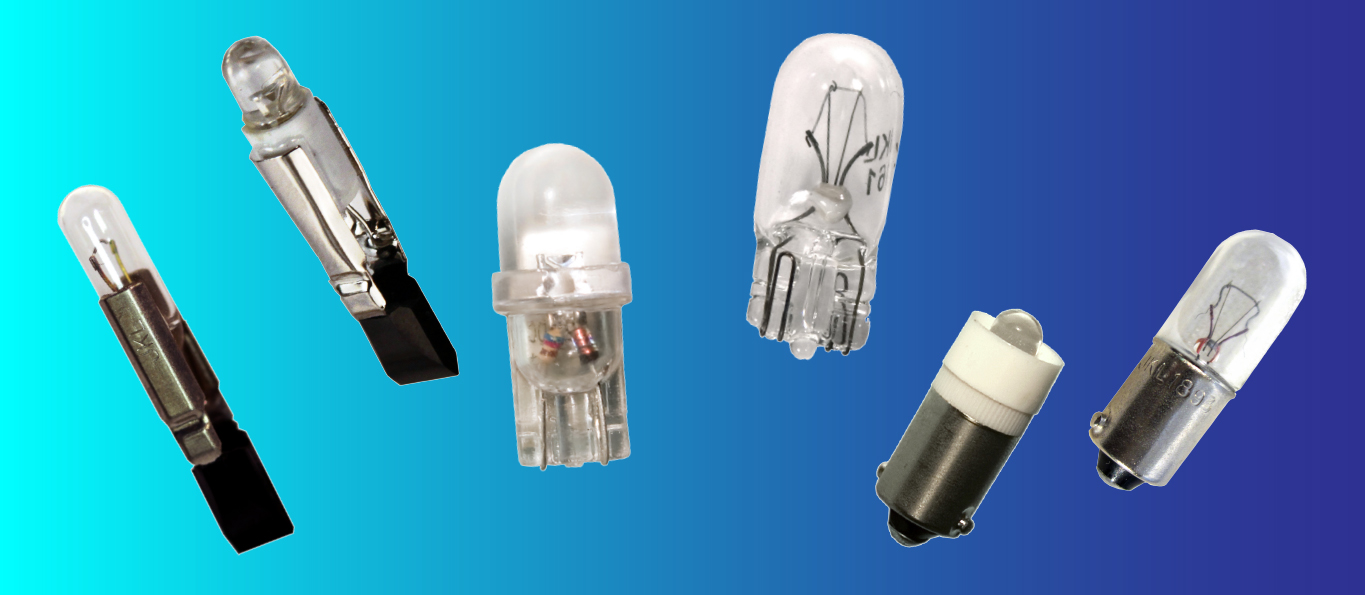Replacing Bulbs with LEDs
Aside from a few specific cases, most equipment and applications are well suited to accept an LED as a replacement for a legacy incandescent bulb. LEDs are more mechanically durable and usually have a longer lifespan. Though, it is important to check the life hours of the lamp you are using before assuming that the LED will last longer. Some lamps offer up to 50,000 life hours and the based LEDs offer 30,000 hours on average.
Here are some considerations:
MECHANICAL FIT
The first challenge is to find an LED with the same base as the lamp you are trying to replace. This will ensure that your replacement will fit into the existing socket. The below example is a T-3 1/4 Bayonet Base Lamp and a T-3 1/4 Based LED. This base is also known as a BA9S. If you have height restrictions in your piece of equipment, you will want to check to make sure that the LED being selected does not exceed the needed height.

T-3 1/4 Bayonet Base Lamp: JKL 1893 14V T-3 1/4 Bayonet Base LED: LE-BA9S-12W 12V AC/DC
VOLTAGE AND AC/DC
If the lamp that you are trying to replace is rated at 12-14 Volts, a 12V LED can be selected. However, please take note of the LED’s specifications. Is it rated AC/DC, indicating that it can likely be used or is the LED DC only? Some equipment operates on AC voltage and selecting a DC voltage LED will not be appropriate. All traditional filament lamps can operate on AC or DC. However, most LEDs are DC only unless otherwise specified.
COLOR
Most traditional filament lamps have a warm white glow. Most LEDs have a cooler white (more blue content) appearance. If your equipment is sensitive to the particular shade of white offered by a traditional bulb, you should try to seek out a LED that is specified as being Warm White.
Reference: 2700° Kelvin is very warm white and 10,000º is very cool white.
VIEWING ANGLE
Traditional lamps glow in all directions—a spherical sense of light. LEDs generally emit light in a narrower viewing angle. Whether or not this matters will depending on your equipment and the desired appearance.
Listed in Do It Yourself Projects, Specialty Legacy Bulbs, Tips & Tools

